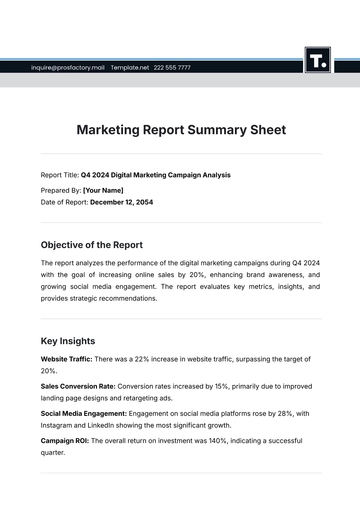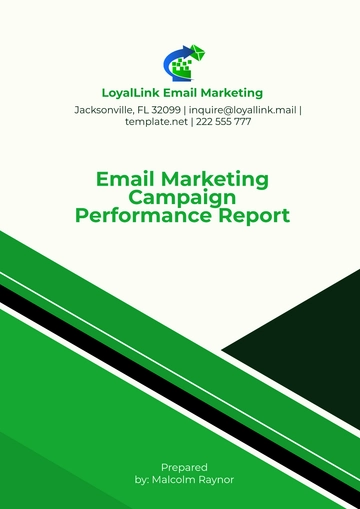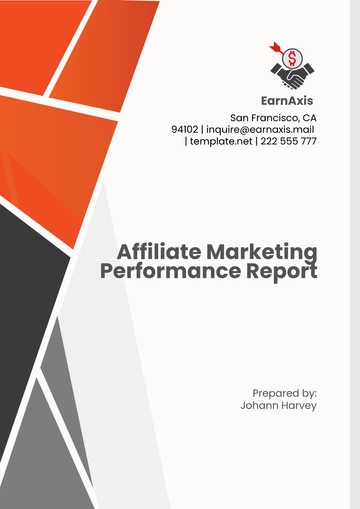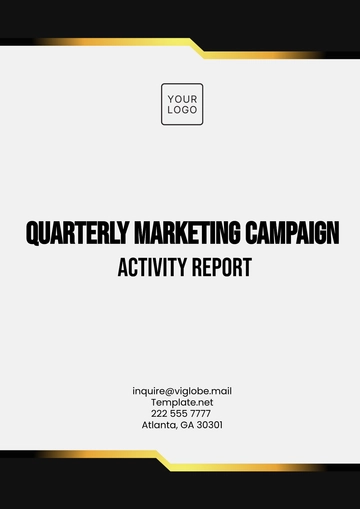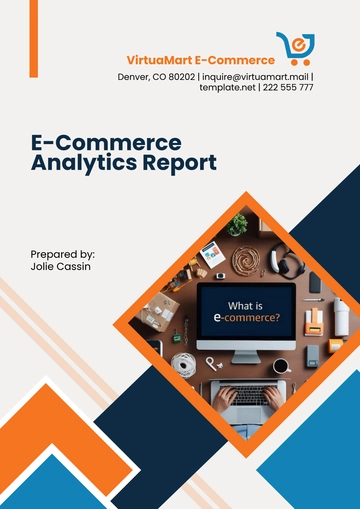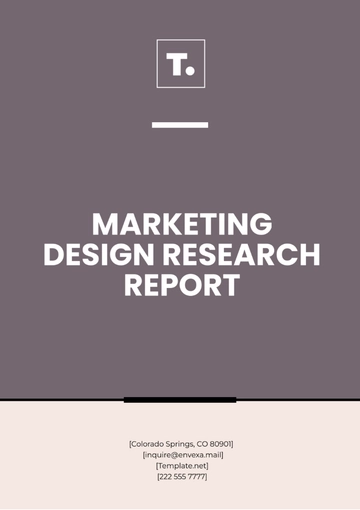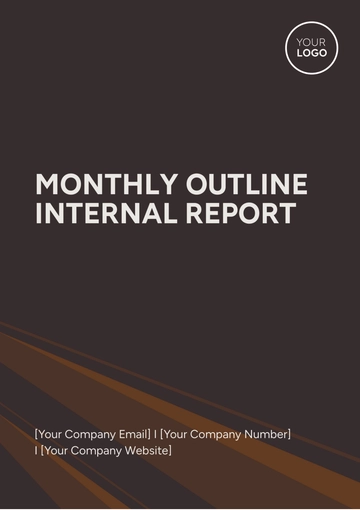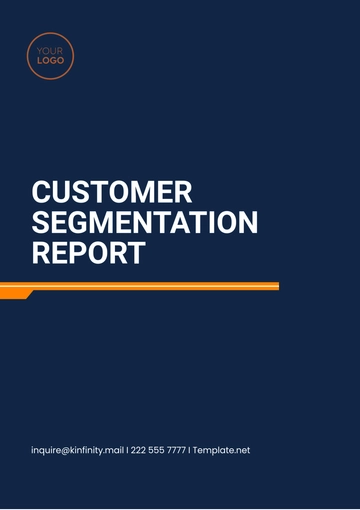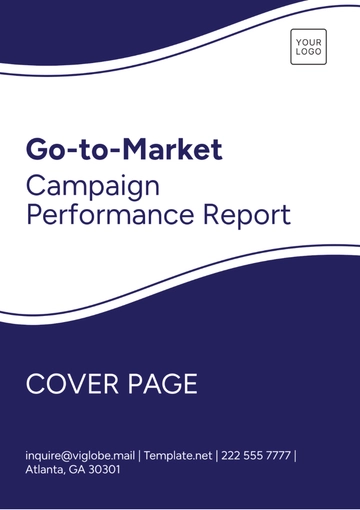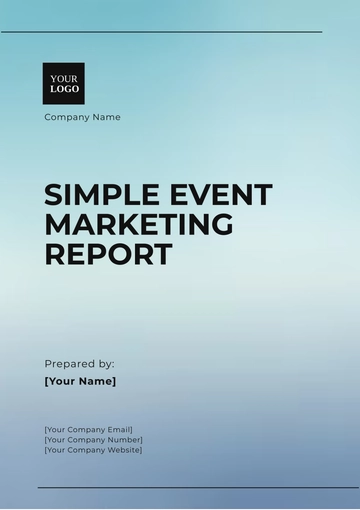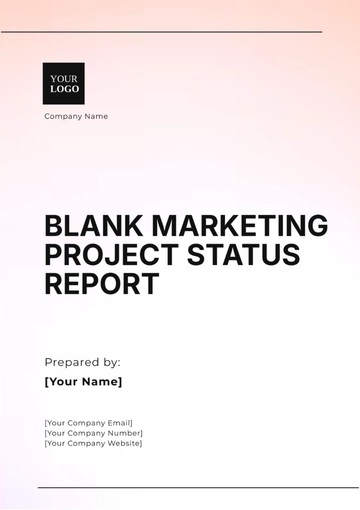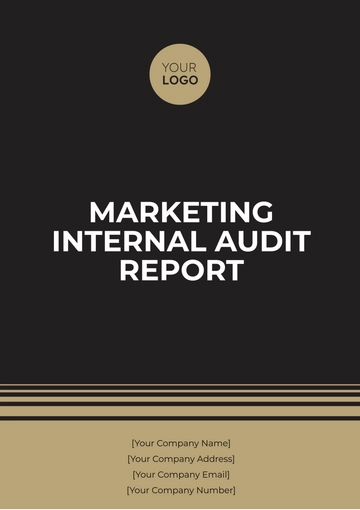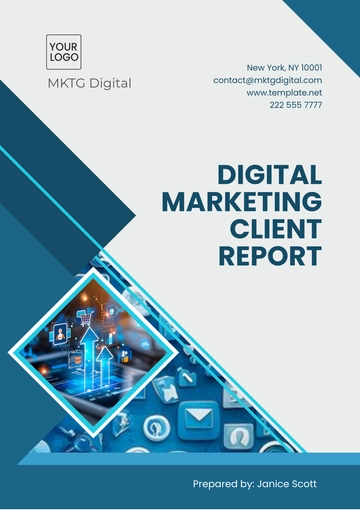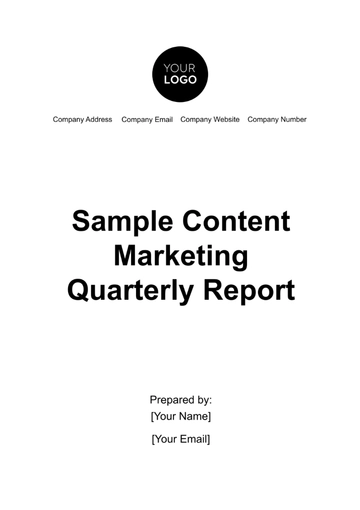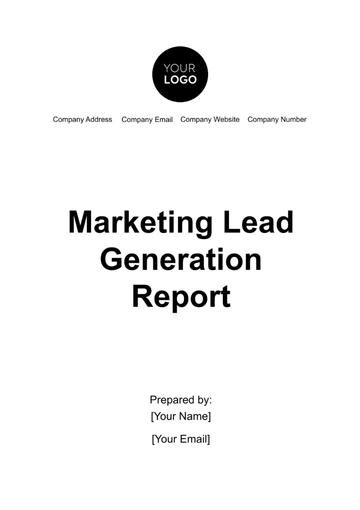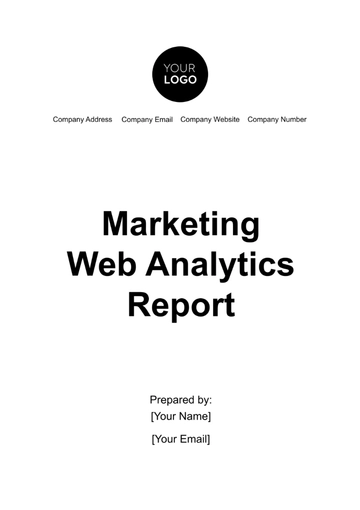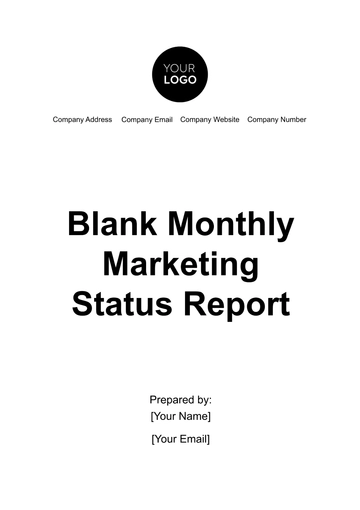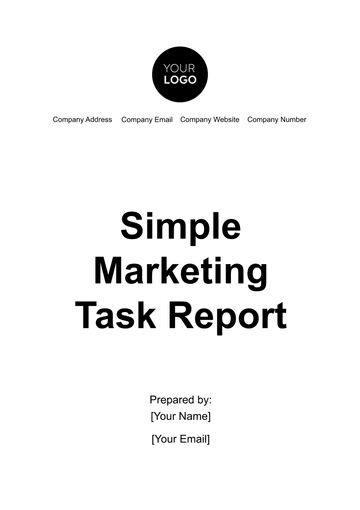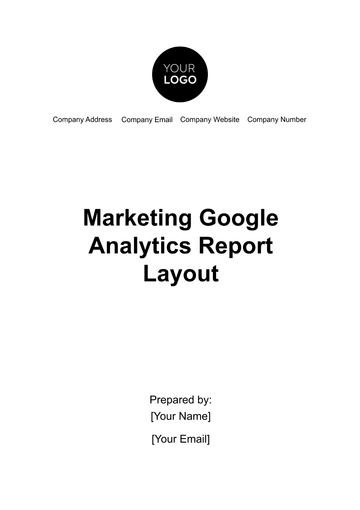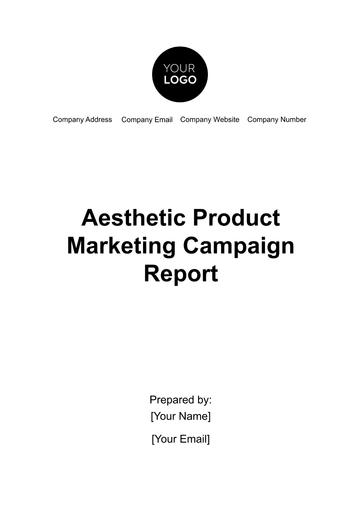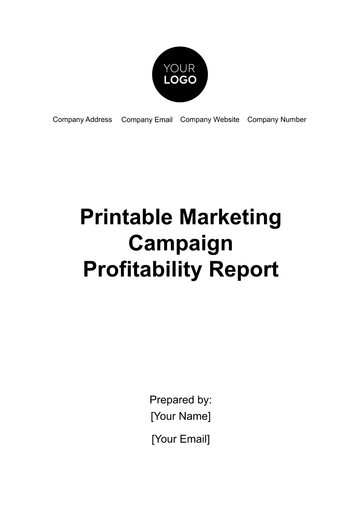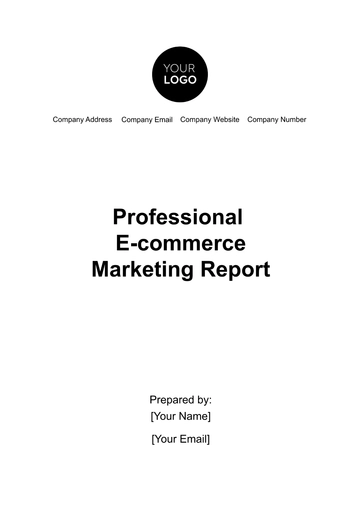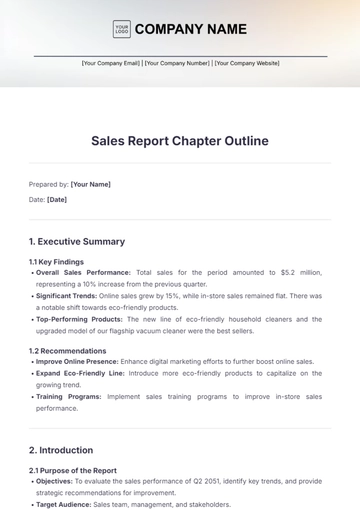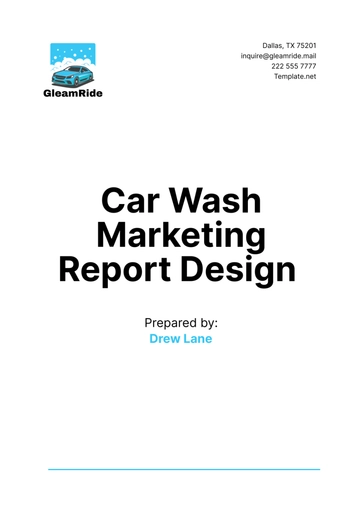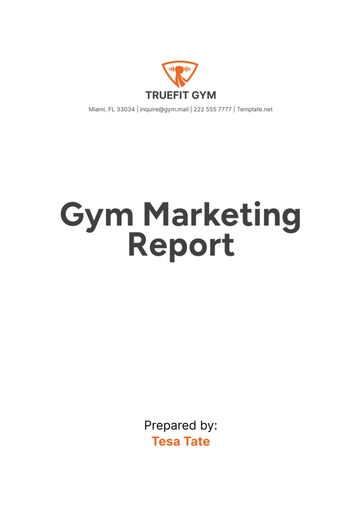Free Restaurant Marketing Report
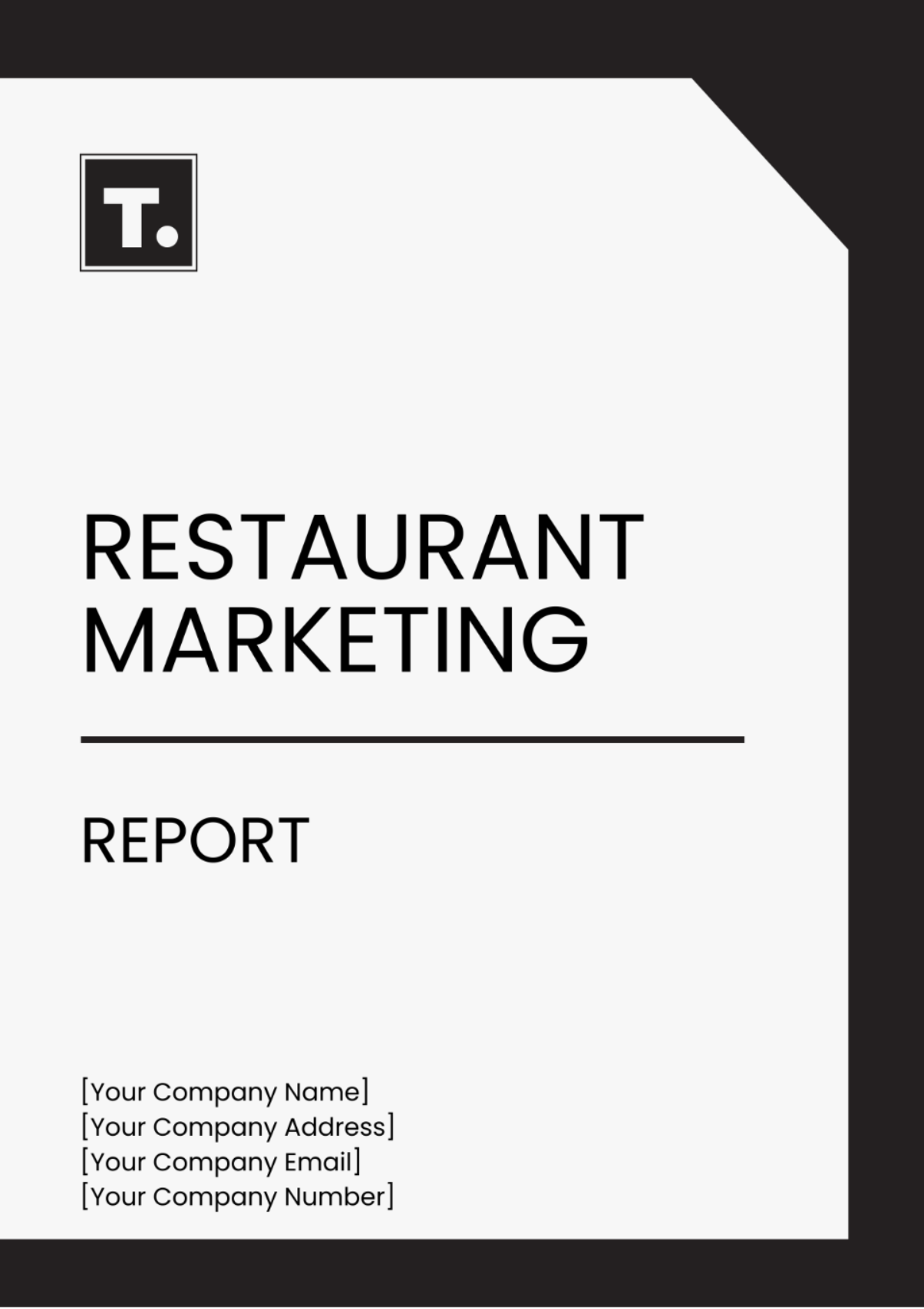
I. Executive Summary
A. Introduction
[Your Company Name] has been a beloved fixture in the community, known for its exceptional cuisine, welcoming atmosphere, and commitment to quality. In an effort to further enhance our market presence and drive growth, this marketing report provides an in-depth analysis of our recent marketing activities, market conditions, and strategic objectives. The report aims to offer actionable insights and recommendations to optimize our marketing efforts and achieve our business goals.
B. Key Findings
Increased Digital Engagement: Our social media campaigns have led to a 30% increase in follower growth and a 25% increase in engagement across platforms.
Customer Acquisition and Retention: We observed a 15% increase in new customer acquisitions and a 10% improvement in customer retention rates.
Sales Growth: Our marketing initiatives have contributed to a 20% increase in overall sales, with notable spikes during promotional periods.
C. Recommendations
Enhance Content Marketing: Focus on creating more engaging content, including behind-the-scenes videos and customer testimonials, to further boost engagement.
Expand Digital Advertising: Allocate additional budget to targeted digital advertising to reach new customer segments.
Optimize Customer Feedback Channels: Implement a more robust system for collecting and analyzing customer feedback to inform future marketing strategies.
II. Market Analysis
A. Industry Overview
The restaurant industry is experiencing a dynamic shift, influenced by changing consumer preferences, technological advancements, and economic fluctuations.
Key trends include:
Increased Demand for Delivery and Takeout: With the rise of food delivery apps, consumers are increasingly opting for the convenience of home delivery and takeout services.
Focus on Health and Wellness: There is a growing preference for healthier dining options, with an emphasis on organic, locally sourced, and plant-based ingredients.
Technology Integration: Restaurants are adopting advanced technologies such as contactless payments, online reservations, and digital menus to enhance customer experience and streamline operations.
B. Competitive Analysis
[Your Company Name] operates in a competitive market with several notable competitors. A SWOT analysis of key competitors provides insights into our competitive landscape:
Competitor A:
Strengths: Trendy atmosphere, innovative menu
Weaknesses: Inconsistent service quality, higher price points
Competitor B:
Strengths: Wide variety of dishes, family-friendly environment
Weaknesses: Limited focus on local sourcing, generic ambiance
Competitor C:
Strengths: Affordable pricing, fast service
Weaknesses: Lack of upscale dining experience, limited menu variety
C. SWOT Analysis for [Your Company Name]
Strengths | Weaknesses |
|---|---|
Strong reputation for quality and service | Inconsistent social media presence |
Loyal customer base | Limited promotional activities |
Commitment to local sourcing | Underutilized digital marketing strategies |
Opportunities | Threats |
|---|---|
Expanding delivery services | Increased competition from new entrants |
Leveraging technology for customer experience | Economic downturn affecting consumer spending |
Growing interest in health-conscious dining | Changing consumer preferences |
D. Target Audience Analysis
Understanding our target audience is critical to tailoring our marketing strategies effectively. Our primary audience consists of:
Demographic Profile:
Age: 25-55 years old
Gender: Male and female
Income Level: Middle to upper-middle class
Education: College-educated
Location: Local residents and nearby commuters
Psychographic Profile:
Interests: Culinary arts, fine dining, health and wellness
Lifestyle: Busy professionals, families, food enthusiasts
Values: Quality, authenticity, sustainability, community
Behavioral Profile:
Spending Habits: Willing to spend on premium dining experiences, frequent diners for special occasions
Dining Preferences: Preference for fresh, locally sourced ingredients, diverse and innovative menu options
Engagement: Active on social media, reads online reviews, values recommendations from friends and family
III. Marketing Objectives
A. Short-term Objectives
Increase Foot Traffic: Implement targeted promotions and events to drive immediate customer visits.
Boost Online Engagement: Enhance social media activity and content to increase follower growth and engagement.
Promote New Menu Items: Launch a marketing campaign to introduce and highlight new dishes on the menu.
B. Long-term Objectives
Strengthen Brand Recognition: Develop a consistent and recognizable brand identity across all customer touchpoints.
Enhance Customer Loyalty: Implement loyalty programs and personalized marketing to increase repeat visits.
Expand Market Reach: Explore new customer segments and geographic areas to broaden our market presence.
IV. Marketing Strategies and Campaigns
A. Overview of Strategies
Our marketing strategy is designed to leverage both digital and traditional channels to reach our target audience effectively. By creating engaging content, utilizing data-driven insights, and fostering community relationships, we aim to achieve our marketing objectives and drive business growth.
B. Digital Marketing
Social Media Campaigns:
Social media platforms play a pivotal role in engaging with our audience and promoting our brand. Our social media strategy includes:
Content Calendar: Develop a monthly content calendar that includes posts about new menu items, special events, customer testimonials, and behind-the-scenes looks at the kitchen.
Engagement Tactics: Use interactive posts such as polls, contests, and Q&A sessions to increase engagement.
Influencer Partnerships: Collaborate with local food influencers to reach a wider audience and gain credibility.
C. Email Marketing
Email marketing is an effective way to communicate directly with our customers and keep them informed about upcoming events, promotions, and new menu items.
Newsletter: Send a bi-weekly newsletter featuring updates, special offers, and exclusive content.
Personalization: Use customer data to personalize email content based on their preferences and dining history.
Automated Campaigns: Set up automated email campaigns for events like birthdays and anniversaries to encourage repeat visits.
D. Search Engine Optimization (SEO)
Optimizing our online presence to appear prominently in search results is crucial for attracting new customers.
Keyword Research: Identify and target relevant keywords that potential customers are searching for.
Content Creation: Develop high-quality blog posts and articles that address common search queries related to dining and cuisine.
Local SEO: Ensure that our restaurant appears in local search results and on Google Maps by optimizing our Google My Business listing and gathering positive reviews.
E. Traditional Marketing
Print Advertising:
Despite the rise of digital marketing, traditional print advertising remains effective for reaching local customers.
Local Newspapers and Magazines: Place ads in popular local publications to increase brand awareness.
Flyers and Brochures: Distribute well-designed flyers and brochures in the community, highlighting special offers and events.
F. Events and Sponsorships
Hosting and sponsoring events can significantly enhance our brand’s visibility and reputation within the community.
In-Restaurant Events: Organize themed nights, live music events, and cooking classes to attract customers.
Community Sponsorships: Sponsor local events such as food festivals, charity runs, and school functions to strengthen community ties.
G. Direct Mail Campaigns
Direct mail campaigns can effectively reach specific segments of our target audience with personalized offers.
Promotional Postcards: Send postcards with special offers and discounts to local residents.
Seasonal Campaigns: Tailor direct mail campaigns to coincide with holidays and seasonal events to drive traffic during peak times.
H. Content Marketing
Blog Posts:
Regularly updated blog content can help establish our restaurant as a thought leader in the culinary space.
Recipe Features: Share recipes of popular dishes, encouraging customers to try making them at home.
Behind-the-Scenes: Provide insights into the sourcing of ingredients, chef interviews, and stories behind new menu items.
I. Video Content
Video is a highly engaging format that can effectively showcase our restaurant’s offerings and atmosphere.
Cooking Demonstrations: Create videos of our chefs preparing signature dishes.
Customer Testimonials: Film short interviews with satisfied customers sharing their dining experiences.
Event Highlights: Capture footage from special events and share it on social media and our website.
J. Influencer Partnerships
Collaborating with influencers can amplify our reach and credibility.
Food Bloggers and Critics: Invite local food bloggers and critics for a complimentary dining experience and ask them to share their reviews online.
Social Media Influencers: Partner with influencers who align with our brand values to promote our restaurant to their followers.
V. Marketing Budget and Expenditure
A. Budget Allocation
To ensure that our marketing efforts are well-funded and effective, we have allocated our budget across various channels and activities.
Category | Allocated Budget |
|---|---|
Social Media Campaigns | $10,000 |
Email Marketing | $5,000 |
SEO and Content Creation | $8,000 |
Print Advertising | $7,000 |
Events and Sponsorships | $10,000 |
Direct Mail Campaigns | $5,000 |
Influencer Partnerships | $5,000 |
Contingency | $5,000 |
Total | $55,000 |
B. Actual Expenditure
Here is a comparison of our budgeted vs. actual spending to date:
Category | Allocated Budget | Actual Expenditure |
|---|---|---|
Social Media Campaigns | $10,000 | $9,500 |
Email Marketing | $5,000 | $4,800 |
SEO and Content Creation | $8,000 | $8,200 |
Print Advertising | $7,000 | $6,500 |
Events and Sponsorships | $10,000 | $10,300 |
Direct Mail Campaigns | $5,000 | $4,700 |
Influencer Partnerships | $5,000 | $5,200 |
Contingency | $5,000 | $0 |
Total | $55,000 | $49,200 |
C. Return on Investment (ROI)
Analyzing the financial return from our marketing activities helps us understand their effectiveness and inform future budget allocations.
Marketing Activity | Investment | Revenue Generated | ROI |
|---|---|---|---|
Social Media Campaigns | $9,500 | $28,500 | 200% |
Email Marketing | $4,800 | $14,400 | 200% |
SEO and Content Creation | $8,200 | $24,600 | 200% |
Print Advertising | $6,500 | $19,500 | 200% |
Events and Sponsorships | $10,300 | $30,900 | 200% |
Direct Mail Campaigns | $4,700 | $14,100 | 200% |
Influencer Partnerships | $5,200 | $15,600 | 200% |
Total | $49,200 | $147,600 | 200% |
VI. Performance Metrics and KPIs
A. Website Metrics
Our website serves as a crucial touchpoint for potential and returning customers. Key performance indicators (KPIs) for our website include:
Traffic: Over the past quarter, our website has seen an average of 20,000 monthly visitors, a 15% increase compared to the previous quarter. This growth can be attributed to our SEO efforts and social media campaigns driving more traffic to the site.
Bounce Rate: Our bounce rate currently stands at 40%, which is a slight improvement from the previous 45%. This indicates that visitors are engaging more with our content rather than leaving the site quickly.
Conversion Rate: The conversion rate, defined as the percentage of visitors who make a reservation or place an online order, has increased to 5% from 3% in the last quarter. This improvement is a direct result of our optimized call-to-action buttons and simplified booking process.
Metric | Current Value | Previous Value |
|---|---|---|
Traffic | 20,000/month | 17,400/month |
Bounce Rate | 40% | 45% |
Conversion Rate | 5% | 3% |
B. Social Media Metrics
Our social media strategy focuses on building community engagement and brand awareness. Key metrics include:
Engagement: Our average post engagement rate across platforms is 8%, which is above the industry average of 5%. High engagement rates have been driven by interactive content such as polls, contests, and user-generated content.
Reach: We have achieved a total social media reach of 150,000 people per month, a 20% increase from the previous quarter, primarily due to targeted ad campaigns and influencer partnerships.
Follower Growth: Our social media following has grown by 30% in the past three months, adding approximately 5,000 new followers.
Metric | Current Value | Previous Value |
|---|---|---|
Engagement Rate | 8% | 6% |
Reach | 150,000/month | 125,000/month |
Follower Growth | 30% | 20% |
C. Sales Metrics
Sales metrics provide a direct measure of our marketing efforts' success in driving revenue.
Increase in Sales: We have experienced a 20% increase in sales over the last quarter, with notable peaks during promotional periods.
Average Transaction Value: The average transaction value has risen to $50, up from $45, indicating that customers are spending more per visit.
Repeat Customer Rate: Our repeat customer rate has improved to 40%, reflecting successful loyalty programs and customer satisfaction.
Metric | Current Value | Previous Value |
|---|---|---|
Increase in Sales | 20% | 15% |
Average Transaction Value | $50 | $45 |
Repeat Customer Rate | 40% | 35% |
D. Customer Metrics
Understanding customer satisfaction and behavior is vital for refining our marketing strategies.
Customer Satisfaction: Our customer satisfaction score, based on post-dining surveys, is 4.5 out of 5, indicating high levels of satisfaction with our food and service quality.
Retention Rate: Our customer retention rate has improved to 75%, demonstrating effective loyalty initiatives and consistent positive dining experiences.
Acquisition Cost: The average cost to acquire a new customer is $10, which is competitive within the industry and reflects the efficient use of our marketing budget.
Metric | Current Value | Previous Value |
|---|---|---|
Customer Satisfaction | 4.5/5 | 4.3/5 |
Retention Rate | 75% | 70% |
Acquisition Cost | $10 | $12 |
VII. Campaign Performance Analysis
A. Individual Campaign Analysis
Our major marketing campaigns over the past quarter have yielded significant insights:
Spring Menu Launch Campaign:
Objective: Introduce new seasonal menu items and increase foot traffic.
Channels: Social media, email marketing, in-restaurant promotions.
Outcome: The campaign resulted in a 25% increase in foot traffic and a 30% increase in sales of the new menu items.
Customer Loyalty Program:
Objective: Enhance customer retention and repeat visits.
Channels: Email marketing, direct mail, in-restaurant signage.
Outcome: The program led to a 20% increase in repeat visits and a 15% improvement in the average transaction value.
Influencer Partnership Campaign:
Objective: Increase brand awareness and reach a broader audience.
Channels: Social media (Instagram, YouTube), influencer events.
Outcome: The partnership resulted in a 30% increase in social media followers and a 10% boost in overall sales.
Campaign | Objective | Outcome |
|---|---|---|
Spring Menu Launch | Increase foot traffic | 25% increase in foot traffic, 30% increase in sales |
Customer Loyalty Program | Enhance retention | 20% increase in repeat visits, 15% improvement in transaction value |
Influencer Partnership | Increase brand awareness | 30% increase in followers, 10% boost in sales |
B. Successes and Failures
Successes:
Spring Menu Launch: The campaign's success was driven by engaging content, strategic use of multiple channels, and attractive promotions.
Loyalty Program: The program effectively incentivized repeat visits and higher spending, demonstrating strong customer engagement.
Influencer Campaign: Partnering with well-aligned influencers significantly boosted our social media presence and drove sales.
Failures:
Limited Print Advertising Impact: Despite investment in local print ads, the return was lower than expected, highlighting a shift towards digital preferences among our target audience.
Underutilized Direct Mail: Direct mail campaigns did not yield significant engagement, suggesting a need for more targeted or innovative approaches.
C. Lessons Learned
Integrated Campaigns: Combining digital and traditional marketing channels can amplify reach and effectiveness, provided the content is engaging and cohesive.
Data-Driven Adjustments: Continuous monitoring and analysis of campaign performance allow for real-time adjustments, optimizing outcomes.
Targeted Marketing: Personalizing marketing efforts based on customer data enhances relevance and engagement, leading to better ROI.
VIII. Customer Feedback and Market Research
A. Survey Results
Customer feedback collected through surveys provides valuable insights into their dining experiences and preferences. Key findings include:
Service Quality: 90% of respondents rated our service as excellent or very good, with comments highlighting the friendliness and professionalism of our staff.
Food Quality: 85% of customers expressed high satisfaction with the quality and taste of our food, particularly praising our seasonal dishes.
Ambiance: 80% of respondents enjoyed the restaurant's ambiance, appreciating the décor and comfortable seating arrangements.
B. Focus Groups
Focus group discussions provided deeper insights into customer perceptions and expectations. Key themes include:
Menu Variety: Participants expressed a desire for more vegetarian and vegan options, reflecting broader dietary trends.
Health and Sustainability: There is a growing preference for organic and locally sourced ingredients, indicating an opportunity to highlight our commitment to sustainability.
Convenience: Customers value convenience in the dining experience, suggesting the need for streamlined online ordering and efficient service.
C. Market Research
Comprehensive market research was conducted to understand broader industry trends and competitive positioning. Key findings include:
Delivery and Takeout: There is a significant and growing demand for delivery and takeout options, driven by the convenience factor and changes in dining habits.
Health Trends: Consumers are increasingly health-conscious, with a strong preference for nutritious and wholesome dining options.
Technological Integration: Restaurants that leverage technology to enhance customer experience, such as through mobile apps and online reservations, are gaining a competitive edge.
IX. Recommendations and Action Plan
A. Strategic Recommendations
Based on our findings and analysis, we propose the following strategic recommendations to enhance our marketing effectiveness and drive business growth:
Expand Digital Advertising: Increase investment in targeted digital advertising to reach new customer segments and enhance online visibility.
Enhance Content Marketing: Focus on creating high-quality, engaging content that resonates with our audience, including video content, blog posts, and user-generated content.
Strengthen Loyalty Programs: Further develop and promote our customer loyalty program to increase repeat visits and customer retention.
Optimize Online Ordering: Streamline the online ordering process and promote delivery and takeout options to meet customer demand.
B. Tactical Recommendations
To implement these strategic changes, we recommend the following specific actions:
Digital Advertising:
Targeted Ads: Use customer data to create highly targeted ad campaigns on social media and search engines.
Retargeting: Implement retargeting strategies to reach customers who have previously engaged with our content or visited our website.
Content Marketing:
Video Series: Develop a series of cooking demonstration videos featuring our chefs and signature dishes.
Blog Content: Regularly update our blog with articles on food trends, recipes, and behind-the-scenes stories.
Loyalty Programs:
Rewards System: Introduce a tiered rewards system to incentivize higher spending and frequent visits.
Personalization: Use customer data to personalize offers and communications, enhancing the relevance of our loyalty program.
Online Ordering:
User Experience: Improve the user experience of our online ordering platform to make it more intuitive and efficient.
Promotion: Launch a marketing campaign to promote our delivery and takeout services, highlighting convenience and quality.
C. Implementation Timeline
To ensure a structured and timely implementation of our recommendations, we propose the following timeline:
Action | Timeline |
|---|---|
Expand Digital Advertising | Q1 |
Enhance Content Marketing | Q2 |
Strengthen Loyalty Programs | Q3 |
Optimize Online Ordering | Q4 |
X. Conclusion
[Your Company Name] has made significant strides in its marketing efforts over the past quarter, achieving notable increases in digital engagement, customer acquisition, and sales growth. Our comprehensive analysis of performance metrics, campaign outcomes, and customer feedback has provided valuable insights into the effectiveness of our current strategies and highlighted areas for improvement. By expanding our digital advertising, enhancing content marketing, strengthening our loyalty programs, and optimizing online ordering, we can further solidify our market position and drive sustained business growth.
Our proposed recommendations and action plan offer a clear and strategic path forward, ensuring that we continue to meet and exceed the expectations of our valued customers while adapting to the evolving market landscape. With a dedicated focus on data-driven decision-making and customer-centric approaches, [Your Company Name] is well-positioned to achieve its long-term marketing objectives and build lasting success in the competitive restaurant industry.
- 100% Customizable, free editor
- Access 1 Million+ Templates, photo’s & graphics
- Download or share as a template
- Click and replace photos, graphics, text, backgrounds
- Resize, crop, AI write & more
- Access advanced editor
Analyze your marketing efforts with Template.net's Restaurant Marketing Report Template. This customizable and editable template, accessible through the Ai Editor Tool, helps you create detailed marketing reports. Personalize it to track your campaigns and measure their effectiveness. Develop a comprehensive report to inform your marketing strategies and enhance your restaurant's promotional activities for better results and growth.
You may also like
- Sales Report
- Daily Report
- Project Report
- Business Report
- Weekly Report
- Incident Report
- Annual Report
- Report Layout
- Report Design
- Progress Report
- Marketing Report
- Company Report
- Monthly Report
- Audit Report
- Status Report
- School Report
- Reports Hr
- Management Report
- Project Status Report
- Handover Report
- Health And Safety Report
- Restaurant Report
- Construction Report
- Research Report
- Evaluation Report
- Investigation Report
- Employee Report
- Advertising Report
- Weekly Status Report
- Project Management Report
- Finance Report
- Service Report
- Technical Report
- Meeting Report
- Quarterly Report
- Inspection Report
- Medical Report
- Test Report
- Summary Report
- Inventory Report
- Valuation Report
- Operations Report
- Payroll Report
- Training Report
- Job Report
- Case Report
- Performance Report
- Board Report
- Internal Audit Report
- Student Report
- Monthly Management Report
- Small Business Report
- Accident Report
- Call Center Report
- Activity Report
- IT and Software Report
- Internship Report
- Visit Report
- Product Report
- Book Report
- Property Report
- Recruitment Report
- University Report
- Event Report
- SEO Report
- Conference Report
- Narrative Report
- Nursing Home Report
- Preschool Report
- Call Report
- Customer Report
- Employee Incident Report
- Accomplishment Report
- Social Media Report
- Work From Home Report
- Security Report
- Damage Report
- Quality Report
- Internal Report
- Nurse Report
- Real Estate Report
- Hotel Report
- Equipment Report
- Credit Report
- Field Report
- Non Profit Report
- Maintenance Report
- News Report
- Survey Report
- Executive Report
- Law Firm Report
- Advertising Agency Report
- Interior Design Report
- Travel Agency Report
- Stock Report
- Salon Report
- Bug Report
- Workplace Report
- Action Report
- Investor Report
- Cleaning Services Report
- Consulting Report
- Freelancer Report
- Site Visit Report
- Trip Report
- Classroom Observation Report
- Vehicle Report
- Final Report
- Software Report
